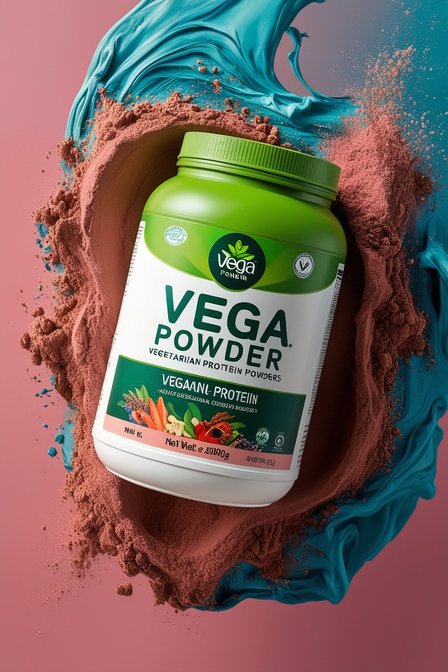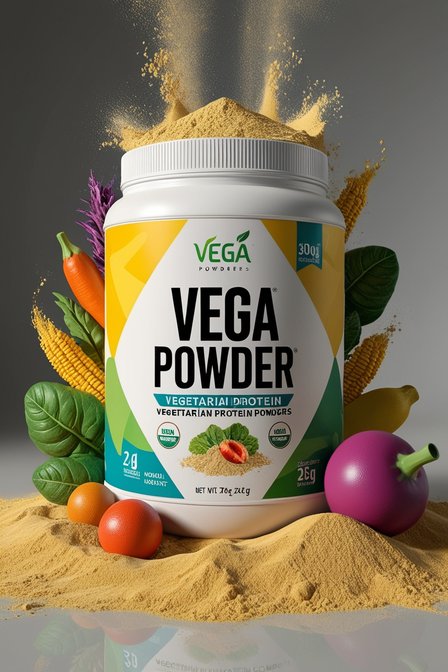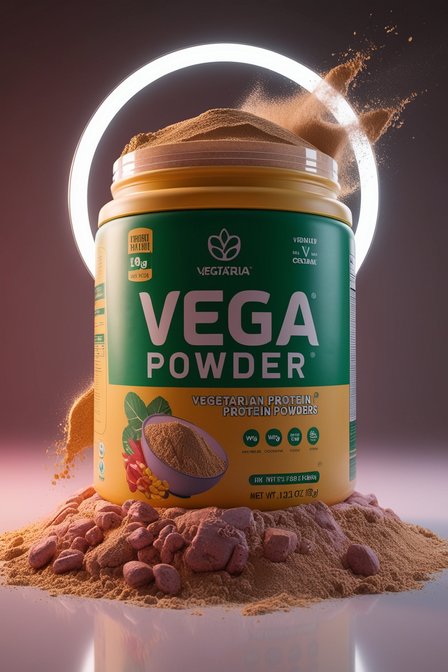The Wonders of Baking Powder: An Essential Ingredient in Baking
Baking powder is a staple ingredient in the world of baking. Its discovery and use have revolutionized the baking industry, allowing for the creation of light, fluffy, and perfectly risen baked goods. Understanding the science behind baking powder, its types, uses, and benefits can enhance one's baking skills and outcomes. This article delves into the comprehensive world of baking powder, exploring its origins, chemistry, and applications in baking.
The History of Baking Powder
Baking powder has an interesting history that dates back to the 19th century. Before its invention, bakers relied on yeast and other leavening agents like beaten eggs to make dough rise. These methods were often time-consuming and unpredictable. The need for a more reliable and quicker leavening agent led to the development of baking powder.
The first commercially available baking powder was developed by English chemist Alfred Bird in 1843. Bird's wife was allergic to yeast, prompting him to find an alternative leavening agent. His invention of baking powder was a game-changer, providing a consistent and effective way to leaven baked goods. This innovation quickly spread across Europe and the United States, transforming baking practices.
The Chemistry of Baking Powder
Baking powder is a dry chemical leavening agent composed of a carbonate or bicarbonate and a weak acid. The most common ingredients in baking powder are baking soda (sodium bicarbonate), cream of tartar (potassium bitartrate), and a moisture-absorbing agent such as cornstarch. When combined with moisture and heat, these components react to produce carbon dioxide gas, which causes dough and batter to rise.
The reaction can be broken down into two main stages. In the first stage, when the baking powder is mixed with wet ingredients, an acid-base reaction occurs, producing carbon dioxide. This initial reaction helps to aerate the batter or dough, giving it a light and airy texture. The second stage of the reaction takes place during baking when heat activates the remaining acid and base, producing more carbon dioxide and further leavening the baked good.
Types of Baking Powder
There are two main types of baking powder: single-acting and double-acting.
Single-Acting Baking Powder: This type of baking powder reacts with moisture and releases carbon dioxide gas as soon as it is mixed with wet ingredients. It requires immediate baking after mixing to prevent the loss of the gas and ensure proper leavening. Single-acting baking powder is less commonly used in modern baking due to its limited convenience.
Double-Acting Baking Powder: Double-acting baking powder is the most widely used type. It contains two acid salts that react at different stages. The first reaction occurs at room temperature when the powder is mixed with wet ingredients, and the second reaction happens when heat is applied during baking. This type of baking powder provides more flexibility, allowing bakers to mix the batter in advance without worrying about losing leavening power.
How to Use Baking Powder
Using baking powder correctly is essential to achieving the desired texture and rise in baked goods. Here are some tips for using baking powder effectively:
Measure Accurately: Too much or too little baking powder can affect the final product. Follow the recipe measurements precisely to ensure proper leavening.
Mix Thoroughly: Ensure that the baking powder is evenly distributed in the dry ingredients before adding wet ingredients. This helps to avoid uneven rising and large air pockets in the finished product.
Bake Promptly: For single-acting baking powder, bake the batter or dough immediately after mixing to retain the gas produced during the initial reaction. With double-acting baking powder, you have a bit more flexibility, but it's still best to bake as soon as possible.
Check Expiry Dates: Baking powder loses its effectiveness over time. Always check the expiry date and store it in a cool, dry place to maintain its leavening power.
Common Uses of Baking Powder
Baking powder is a versatile ingredient used in a variety of baked goods. Some common applications include:
Cakes: Baking powder is a key ingredient in cake recipes, providing the lift needed to create a light and fluffy texture.
Cookies: It helps cookies rise and become tender, creating the perfect balance between crispiness and chewiness.
Biscuits and Scones: Baking powder is essential in biscuit and scone recipes, contributing to their flaky and airy texture.
Pancakes and Waffles: It gives pancakes and waffles their characteristic rise and fluffiness, making them light and delicious.
Baking Powder Substitutes
In situations where baking powder is unavailable, several substitutes can be used, although they may not provide the exact same results. Some common substitutes include:
Baking Soda and Acid: Combine 1/4 teaspoon of baking soda with 1/2 teaspoon of an acid such as vinegar or lemon juice for each teaspoon of baking powder needed. This combination mimics the leavening action of baking powder.
Self-Rising Flour: This flour contains baking powder and salt, making it a convenient substitute. Adjust the amount of additional salt in the recipe accordingly.
Club Soda: In recipes that require liquid, substituting some of the liquid with club soda can provide a leavening effect due to its carbonation.
The Importance of Baking Powder in Gluten-Free Baking
Gluten-free baking can be challenging due to the lack of gluten, which provides structure and elasticity to baked goods. Baking powder plays a crucial role in gluten-free baking by providing the necessary lift and texture. It helps to create light and airy baked goods, compensating for the absence of gluten.
When using baking powder in gluten-free recipes, it's important to use a gluten-free baking powder. Some commercial baking powders may contain traces of gluten due to cross-contamination during manufacturing. Look for baking powders labeled as gluten-free to ensure the safety of those with gluten sensitivities or celiac disease.
Troubleshooting Baking Powder Issues
Sometimes, baking powder may not work as expected, resulting in dense or flat baked goods. Common issues and solutions include:
Expired Baking Powder: Ensure your baking powder is fresh. Expired baking powder will not produce the necessary carbon dioxide for leavening.
Improper Mixing: Uneven distribution of baking powder can lead to inconsistent rising. Sift the dry ingredients together to ensure even mixing.
Overmixing: Overmixing the batter can cause the carbon dioxide to escape, resulting in dense baked goods. Mix just until the ingredients are combined.
Incorrect Measurements: Accurate measurements are crucial. Using too much or too little baking powder can affect the texture and rise of the baked goods.
The Environmental Impact of Baking Powder
The production and disposal of baking powder have environmental implications. Many commercial baking powders are packaged in non-recyclable materials, contributing to waste. Choosing baking powders packaged in recyclable or biodegradable materials can help reduce environmental impact.
Additionally, some baking powders contain aluminum compounds, which have raised health and environmental concerns. Aluminum-free baking powders are available and are a safer and more environmentally friendly option.
Baking Powder and Health Considerations
While baking powder is generally safe for consumption, excessive intake of baking powder can lead to health issues such as high sodium levels and digestive problems. It's important to use baking powder in moderation and follow recipe guidelines.
For those with dietary restrictions, such as low-sodium diets, there are low-sodium baking powders available. These alternatives use potassium bicarbonate instead of sodium bicarbonate, providing a similar leavening effect with less sodium.
Innovations in Baking Powder
The baking industry continues to innovate, developing new and improved baking powders. Recent advancements include:
Natural Baking Powders: Made from naturally sourced ingredients, these baking powders cater to the growing demand for natural and organic products.
Customized Baking Powders: Some companies offer baking powders tailored to specific dietary needs, such as gluten-free, low-sodium, or vegan options.
Eco-Friendly Packaging: With increasing environmental awareness, more companies are opting for sustainable packaging solutions for baking powders.
Conclusion
Baking powder is a versatile and essential ingredient in the world of baking. Its ability to produce light, fluffy, and well-risen baked goods has made it a staple in kitchens worldwide. Understanding its history, chemistry, types, and uses can enhance one's baking skills and lead to consistently delicious results. Whether you're a novice baker or a seasoned pro, appreciating the role of baking powder in your recipes can elevate your baking to new heights. As the baking industry continues to innovate, we can look forward to even more exciting developments in the world of baking powder.




